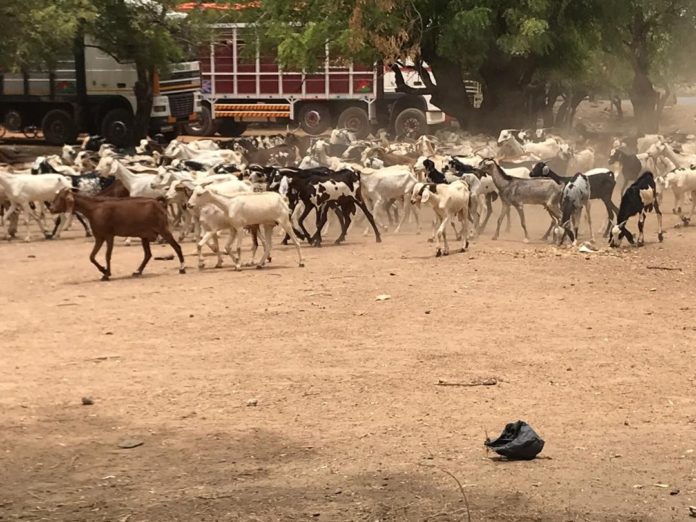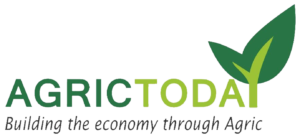The Novel Corona Virus (COVID 19) outbreak started in Wuhan Hubei, livestock market in China with the first case recorded 1st December 2019. It got trumpeted and assumed global attention when it spread to other parts of the world leading to it been classified as a pandemic by the World Health Organization (WHO).
The global confirmed and infected persons with COVID-19 are2,492,963 and 171,152 deaths with Ghana recording 1,042 infected persons and 9 deaths from the disease. Both the global and Ghana COVID-19 cases are increasing and showing no sign of decline soon.
This article takes a closer look at COVID 19 pandemic, implications, possible impact on value chain actors in livestock markets and protein requirement since the Government of Ghana instituted measures to arrest the spread of COVID 19 in Ghana.
It is suggested COVID 19 started in a wet livestock market in Wuhan in China and since then assumed the global dimension. Wet market originates from Hong Kong and Singapore English to distinguish markets selling fresh meat and produce from “dry” markets selling packaged and durable goods such as textiles.
In an article published in the conservation of 31st January 2020, anthropologists Christos Lynteris, University of St Andrews, and Lyle Fearnley, Singapore University of Technology and Design (SUTD, noted “It is highly probable that this new form of coronavirus, which causes pneumonia—in some cases lethal—emerged through a zoonotic spillover, a ‘jump’ of the virus from non-human animals to humans, in early December 2019. Chinese scientists have traced the potential source of the virus to Wuhan’s Huanan Seafood Wholesale Market. The market sold much more than seafood, including a range of wild animals. And scientists suspect that the virus ‘jumped’ to humans from one of the wild animal species sold at the market” https://theconversation.com/why-shutting-down-chinese-wet-markets-could-be-a-terrible-mistake-130625.
It well documented wild animals are the reservoir of most emerging and zoonotic diseases to man. Out of more than 300 emerging infections identified since 1940, over 60% are zoonotic, and of these, 72% originate in wildlife. It is suggested COVID 19 might have emerged from bats, as bats are widely believed to constitute the animal reservoir of many infectious diseases transmissible to humans https://theconversation.com/ebola-bats-get-a-bad-rap-when-it-comes-to-spreading-diseases-32785. Just as in 2003, SARS a coronavirus, as well as in 2013-14, avian influenza H7N9 originated from animal source.
The COVID-19 global spread has led to lockdown of many countries with Ghana no exception. Ghana has seen the partial lockdown at Accra, Kasoa and Greater Kumasi, until few days it was lifted, the closing of the country borders of sea, air and land to human movement except agricultural commodities and other essential vital for sustenance.
Many countries are counting their losses as a result of the pandemic. The impact and damage of the pandemic as assessed by many institutions is colossal, amounting to billions and in some cases trillions of dollars depending on the country. Several emergencies and stimulating packages have been announced by various governments globally to support businesses and mitigate the impact of the disease. This notwithstanding, a recent UN research showed the novel COVID-19 would increase global poverty by close to a billion dollars.
The composition of Ghana’s livestock and poultry sector is majority smallholder (80%) with medium to commercialized scale production sharing the 20%. However, domestic production and supply do not the demand particularly cattle, sheep and goats. The deficit in production is fueled by imports of animal products and live livestock from Sahel countries.
Sheep, Goats, and Cattle under Quarantine for Routine Health Checks Prior to Loading at Paga Veterinary Border Post- Upper East Region.

Veterinary Border Post.
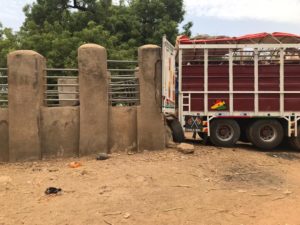
after Quarantine and Health Checks.
Dynamics in the Livestock Market.
Most often smallholder producers who are in need of cash catch one animal, either pull or carry it on a bicycle or motor-bike to the market for sale. Occasionally, on their way to the market, they a times meet an aggregator or middle trader who buys and then haul the animals to a bigger market regionally or transport them to the south with anticipation of getting higher market.
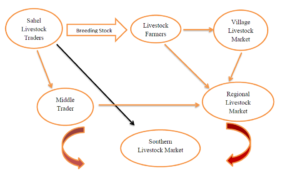
Impact COVID-19 on Domestic and Live Livestock Import from Sahel Countries.
COVID 19 is having a negative impact on domestic livestock marketing and live livestock imports from Sahel countries. Currently, the livestock markets and border quarantine stations could be described as deserted or empty since the outbreak of COVID-19 and the subsequent partial lockdown. Example as observed in Bawku Municipal livestock market on a market day. Insert picture of Bawku. On this particular market day, few domestic traders and no neighboring Sahel countries traders were present. Police were seen in the market ordering the few traders present to observe social distancing of 2 meters.
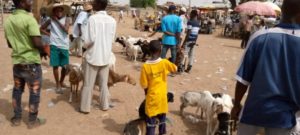
Although the presidential directive on movement does not include agricultural goods or products, the traders are afraid of purchasing and moving animals to the south since COVID-19 cases were reported. The traders indicated they could be infested with the virus should they move animals to the south amid the partial lockdown of Accra, Kasoa and Great Kumasi main market outlets.
Ghana’s livestock production does not meet domestic requirements leading to imports from Sahel countries officially is indicated in Table 1.
Table 1: Live Animal Imports from Sahel Countries.
| Year | Cattle | Sheep | Goats | Total | *Share of Total Imports | ||
| Cattle | Sheep | Goats | |||||
| 2007 | 8,891 | 6,594 | 4,498 | 19,983 | 44.5% | 33.0% | 22.5% |
| 2008 | 1,081 | 1,401 | 1,514 | 3,996 | 27.1% | 35.1% | 37.9% |
| 2009 | 10,119 | 4,987 | 6,098 | 21,204 | 47.7% | 23.5% | 28.8% |
| 2010 | 11,389 | 4,843 | 3,711 | 19,943 | 57.1% | 24.3% | 18.6% |
| 2011 | 9,384 | 2,835 | 2,495 | 14,714 | 63.8% | 19.3% | 17.0% |
| 2012 | 23,622 | 9,840 | 10,008 | 43,470 | 54.3% | 22.6% | 23.0% |
| 2013 | 21,131 | 16,738 | 16,953 | 54,822 | 38.5% | 30.5% | 30.9% |
| 2014 | 20,948 | 22,188 | 32,012 | 75,148 | 27.9% | 29.5% | 42.6% |
| 2015 | 17,968 | 15,763 | 20,004 | 53,735 | 33.4% | 29.3% | 37.2% |
| 2016 | 23,575 | 13,854 | 16,900 | 54,329 | 43.4% | 25.5% | 31.1% |
Source: Veterinary Services Directorate, MoFA in Agric in Ghana: Facts and Figures (2016)
*SRID, MoFA, (Computed)
However, the country quarantine border posts in Paga and Hamile have seen a sharp decrease in the number of trucks and livestock imports. Data from Paga quarantine post is indicated in Table 2.
Table 2: Average Number of Live Animals Moving through Page Border in the Upper East Region.
| Livestock Specie | Average No. of Trucks | Average No. of animals per Truck | Average Weekly | Monthly | Annual |
| Cattle | 29 | 50 | 1,450 | 5,800 | 69,600 |
| Sheep | 7.4 | 180 | 1,340 | 5,360 | 64,320 |
| Goats | 18.6 | 180 | 3,350 | 13,400 | 160,800 |
| Total (Ave) | 18 | 136 | 2,046 | 8,186 | 98,240 |
Source: Paga Quarantine Station in March 2020
Since the outbreak of COVID-19 and the partial lockdown, the quarantine station has seen a drastic decrease in the average number of trucks coming with live livestock from Sahel countries meant for the southern Ghana markets. The average truck for all species during peak days particularly Thursdays has fallen from 18 trucks to 6 trucks weekly. The drop in a movement of trucks, livestock and vigorous activity at livestock markets means a fall in revenue for Metropolitan, Municipal and Districts Assemblies and Government.
The stagnation in livestock marketing and movement has the potential to reduce livestock product consumption particularly ruminants such as cattle, sheep and goats from domestic and Sahel imports.
The persistence of COVID-19 has the potential to affect the already deplorable per capita consumption of animal source of proteins in Ghana. For example, as far back in 2001, it was noted that the average Ghanaian consumes far below the recommended animal source of protein or products. The per capita consumption of livestock products in Ghana was 1.08 kg for beef, 0.70 kg each of small ruminants and poultry meat, 0.49 kg of pig meat, 1.46 litres of milk and 18.9 eggs per year. These levels of consumption are only 6.7% of the averages for Africa and only 2% of the FAO recommended levels (Appraisal Report Livestock Development Project, 2001).
It is worth noting as the figures have not changed much since then even with the imports of live animals from Sahel countries. Meanwhile, health authorities are emphasizing on improving our nutrition to boost our immune system. How will Ghana cope with meeting its protein requirement from ruminant livestock should COVID-19 continue beyond the expected or projected date of cessation?
Until COVID-19 is brought under control, livestock value chain actors should adopt the following:
- Avoid close contact with sick individuals.
- Frequently washing hands with soap and water under running water.
- Avoid touching the eyes, nose, or mouth with unwashed hands.
- Practice good respiratory hygiene by using nose mask.
- Practice social distance of 2 meters in the livestock markets.
- Sparse out the livestock in the market ground.
- Reduce the number of persons accompanying animals in trucks to markets especially lockdown regions.
Article by: Abukari Yakubu,
Regional Livestock Officer/Agricultural Systems Specialist,
Northern Region, Ghana.

